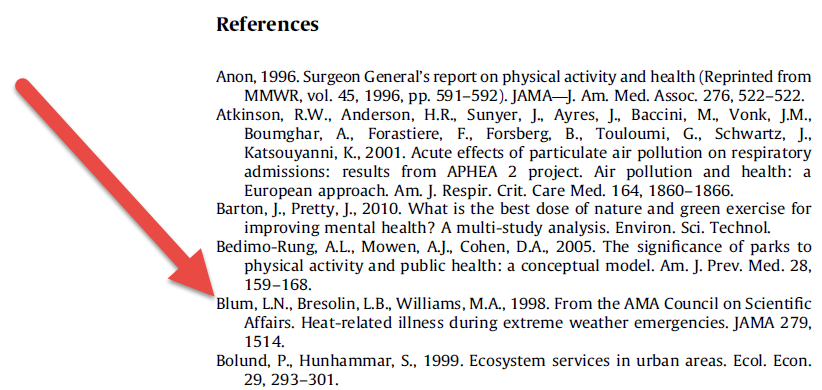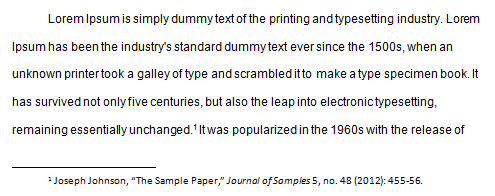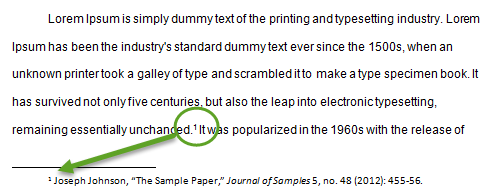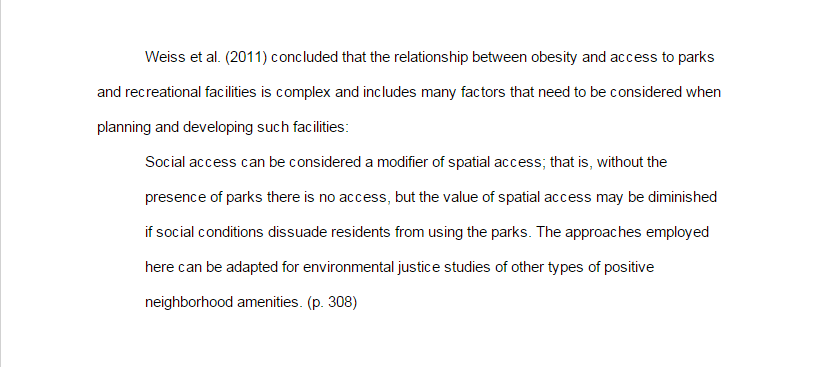Citations & Plagiarism
Tim Miller - tim.miller@humboldt.edu - 707.826.4959
Properly citing your sources
What we will do today
- Examine the question:
"What is plagiarism?" - Proper use of citations
- Quote & Paraphrase
- Style Guide resources
What do you want to know?
Why did you come today?
What class(es) are you taking that require citations?
What style guide do you use for your discipline?
Style Guides
More than just citations/references
-
formatting
- margins
- line spacing
- pagination
- etc
- You are not expected to memorize- use resources!
Citation Basics
-
Organization
- save the citations when you find the article
- track which concepts come from which articles
-
Save from the database
- Specific style format (APA, MLA, CSE, Chicago, etc)
Why Cite?
Citations are an important part of scholarship
- Contribute to the knowledge-base
- Scholarship builds on the work & ideas of others
- Recognize the work of others
- Provide evidence & support for your ideas
- Provide your readers with more information
Quiz
True or False:
The same basic information is needed to reference a source in:
MLA (Modern Language Association )
APA (American Psychological Society)
CSE (Council of Science Editors)
CMS (Chicago Manual of Style)
Quiz - #1
True or False:
When citing a source you retrieve online, all you need is a URL.
Quiz - #2
True or False:
If you write about an author’s idea without quoting them, you do not need to cite the source.
Quiz - #3
True or False:
The primary purpose of citing your sources is to prove that you are not plagiarizing.
Quiz - #4
What is plagiarism?
HSU Academic Honesty Policy:
http://www2.humboldt.edu/studentrights/academic-honesty
- copying work that isn't your own
- not giving credit for ideas or content that you got from another source
- submitting another person's work as your own
- reproducing another person's work and claiming it as your own
How do you avoid plagiarism?
-
if you use someone else's idea, give them credit
- quote: using the exact language
- paraphrase: re-wording the concept in your own words
-
don't cheat!
- only turn in work that you created yourself
Quote

The current body of research "has repeatedly shown that proximity and access to parks and outdoor recreational opportunities is positively correlated with active behaviors" (Weiss et al., 2011).
Quotation marks & citation
Weiss, C., Purciel, M., Bader, M., Quinn, J., Lovasi, G., Neckerman, K., & Rundle, A. (2011). Reconsidering Access: Park Facilities and Neighborhood Disamenities in New York City. Journal Of Urban Health, 88(2), 297-310.

Paraphrase
The current body of research shows a positive correlation between an active lifestyle and access to park and recreation areas (Weiss et al., 2011).
Citation- no quotation marks
Weiss, C., Purciel, M., Bader, M., Quinn, J., Lovasi, G., Neckerman, K., & Rundle, A. (2011). Reconsidering Access: Park Facilities and Neighborhood Disamenities in New York City. Journal Of Urban Health, 88(2), 297-310.
Quiz: Proper Citation or Plagiarism?

Populations with larger percentages of poor African Americans and/or Latinos have less park space.
Plagiarism
No citation
Weiss, C., Purciel, M., Bader, M., Quinn, J., Lovasi, G., Neckerman, K., & Rundle, A. (2011). Reconsidering Access: Park Facilities and Neighborhood Disamenities in New York City. Journal Of Urban Health, 88(2), 297-310.

Predominantly African American and/or Latino low-income neighborhoods have less park space.12
Weiss, C., Purciel, M., Bader, M., Quinn, J., Lovasi, G., Neckerman, K., & Rundle, A. (2011). Reconsidering Access: Park Facilities and Neighborhood Disamenities in New York City. Journal Of Urban Health, 88(2), 297-310.
Not Plagiarism
Citation
Quiz: Proper Citation or Plagiarism?

Weiss, C., Purciel, M., Bader, M., Quinn, J., Lovasi, G., Neckerman, K., & Rundle, A. (2011). Reconsidering Access: Park Facilities and Neighborhood Disamenities in New York City. Journal Of Urban Health, 88(2), 297-310.
Weiss et al. (2011) reported that, "the greater the percentage of residents who are African American, who are Latino, and who are poor, the lower is the amount of park acreage."
Not Plagiarism
Citation & quotation marks
Quiz: Proper Citation or Plagiarism?

Weiss, C., Purciel, M., Bader, M., Quinn, J., Lovasi, G., Neckerman, K., & Rundle, A. (2011). Reconsidering Access: Park Facilities and Neighborhood Disamenities in New York City. Journal Of Urban Health, 88(2), 297-310.
In neighborhoods with larger percentages of poor African Americans and/or Latinos, the lower the amount of park acreage (Weiss et al. 2011).
Plagiarism
Not true paraphrasing
Quiz: Proper Citation or Plagiarism?
Paraphrase this:
Think about:
- key concept(s)
- what is most important?
- synonyms
- how to summarize
Weiss, C., Purciel, M., Bader, M., Quinn, J., Lovasi, G., Neckerman, K., & Rundle, A. (2011). Reconsidering Access: Park Facilities and Neighborhood Disamenities in New York City. Journal Of Urban Health, 88(2), 297-310.



There is a relationship between park acreage and the demographic make-up of the neighborhood.
Anatomy of a Citation
What is a citation?
Two pieces:
- in-text citation
- in the body of the paper
- reference list entry
- at the end of the paper





The in-text citation refers the reader to the reference list for complete citation information.
APA.....................(Nel, 2005, p. 805)
MLA.................................................(Nel 805)
CMS..............................(Nel 2005, 805)
CSE............................................(Nel 2005)
Parenthetical:
With the basic information, the reader can find the full citation at the end of the paper:
author's name, date of publication & page number
In-line Citation
In-line Citation
Footnote / Endnote:
- Instead of a parenthetical in-text citation, some styles allow or require the use of footnotes or endnotes. (Chicago & CSE have this option)
- A numbered footnote/endnote is included in the text, which corresponds to the note which includes the full citation.


Reference List Entry
Full citation:
With the following information, the reader should be able to find the article on her own:
- author's name
- date of publication
- article title
- journal title
- volume & issue
- page number
- DOI/URL (e-articles)
- Nel, A.
- May 6, 2005
- Air pollution-related illness: Effects of particles
- Science
- 308 (5723)
- 804-806
- http://www.jstor.org/stable/3841924
AKA:
Works Cited, Bibliography, Literature Cited, Cited References
Nel, A. (2005). Air pollution-related illness: Effects of particles. Science, 308, 804-806.
Nel, André. "Air Pollution-Related Illness: Effects of Particles." Science, 308.5723 (2005): 804-806.
Nel, André. 2005. "Air Pollution-Related Illness: Effects of Particles." Science. 308, no. 5723: 804-806.
Nel A. 2005 May 6. Air pollution-related illness: Effects of particles. Science (308): 804-06.
APA
MLA
CMS
CSE
Reference List Entry
Examples:
DOI & URL
DOI - Digital Object Identifier
- unique alphanumeric code used to identify and locate an electronic article:
10.1126/science.1108752 http://doi.org/10.1126/science.1108752
URL - Uniform Resource Locator
- address for a site or page on the worldwide web:
http://www.jstor.org/stable/3841924
Electronic Articles
Each style has its own rules about when to include or not include a DOI or URL.
- MLA - No DOI/URL necessary
- include name of database & date retrieved
- APA - Include DOI/URL if different from print version
- do not include name of database or date retrieved
- Chicago - Always include DOI/URL
- incl db name if no stable URL, incl date retrieved
- CSE - Always include DOI/URL
- include name of database & date retrieved
DOI is always preferred over URL
Only use stable/permanent URL
How often should you cite?
- APA - every time you use an idea from another source
- MLA - not necessarily every sentence
- Be clear - use a citation if necessary
- use page #s for multiple references in one citation: (Miller 25, 113) at the end of a paragraph
- OR mention author's name once, but incl. page # in parentheses after every reference
- Be clear - use a citation if necessary
- CMS - not necessarily every sentence
- place citation at end of paragraph
- page # at end of each sentence
- CSE - use one citation, be creative with wording
In-text Citations
Long Quotations - example
- For longer quotations, place the quotation in a block, indented 1/2" (APA, CMS & CSE) or 1" (MLA).
- Other formatting such as line spacing and use of quotation marks varies across styles.

1/2" or 1"
- New page (insert page break)
-
Title:
- APA - References
- MLA - Works Cited
- CMS - Bibliography (& others)
- CSE - References/Cited References/Literature Cited
- Hanging indent - 1/2"
-
Order:
- Alphabetized - main author last name (parenthetical)
- Order of appearance (footnotes)
Reference List
References - example
1/2"
Hanging Indent


References - Hanging Indent
Google Docs

References - Hanging Indent
MS Word

True or False:
The same basic information is needed to reference a source in:
MLA (Modern Language Association )
APA (American Psychological Society)
CSE (Council of Science Editors)
CMS (Chicago Manual of Style)
Quiz - #1
True or False:
When citing a source you retrieve online, all you need is a URL.
Quiz - #2
True or False:
If you write about an author’s idea without quoting them, you do not need to cite the source.
Quiz - #3
True or False:
The primary purpose of citing your sources is to prove that you are not plagiarizing.
Quiz - #4
Resources
- Library Research Guides
-
OWL Purdue Online Writing Lab
- HSU Library Zotero Guide
- HSU Writing Center

